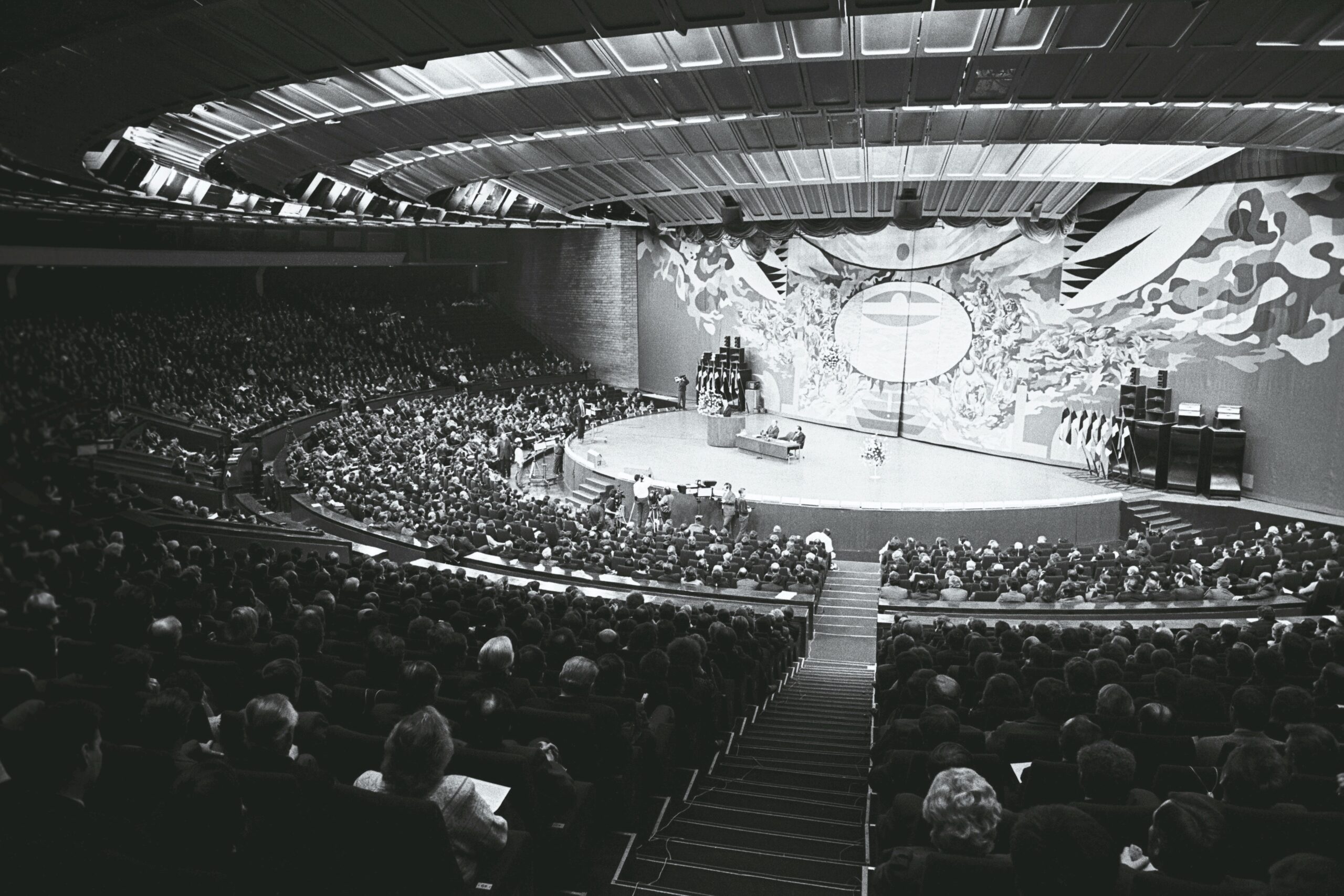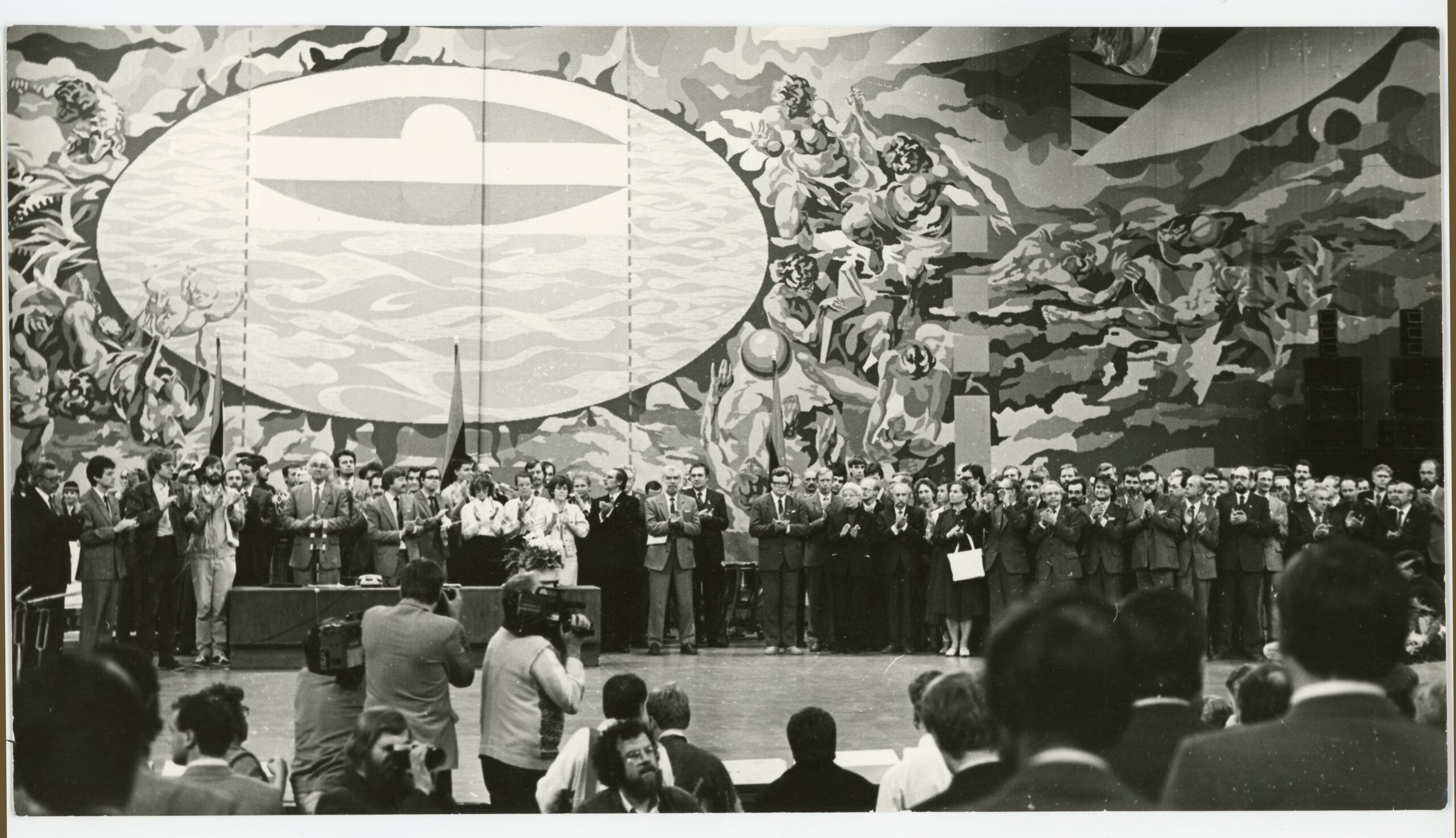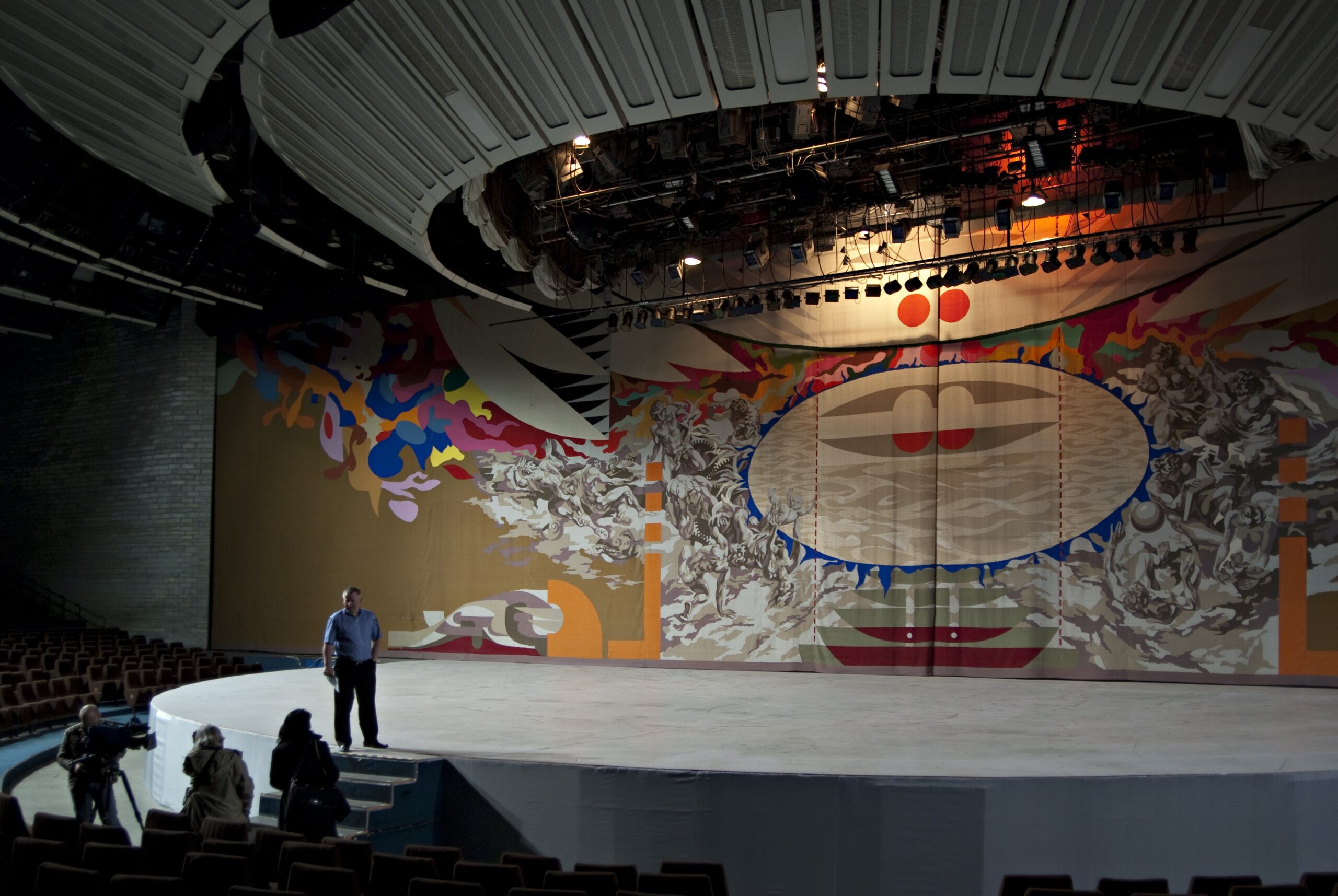City Hall Tapestry Curtain
Year of completion: 1985
Address: Harju County, Tallinn, Mere pst 20
Design author Enn Põldroos
Executed by Hilja Karri, Aino Stamm, Marika Hallangu
Tapestry
48 × 10 metres
The City Hall is the architectural monument no. 8781, the piece itself is not listed as a separate monument
In every Eastern European capital, there is a Cold-War Era monumental public building that has as if gotten in the way of time and that stands without use but which locals still cherish. In Tallinn, this building is the City Hall, the value of which was especially acknowledged after the demolition of the Sakala Centre in 2007, which sparked the concern that continuing at the same rate, there will soon be no examples of peak Soviet Era architecture.
The V. I. Lenin Palace of Culture and Sports with its 4200-seat auditorium, skating rink, cafés and other rooms was constructed in 1980 for the Moscow Olympics. It was constructed with the goal of preserving a view to the silhouette of the Old Town over the sea. In addition to that, the architects Riina Altmäe and Raine Karp managed to design the building into a connecting link between the sea and the Old Town. Architecture historian Andres Kurg has referred to this design as the beginning of a post-industrial urban space in Estonia. Right now, we are used to Creative Cities taking over former industrial buildings but the construction of the City Hall in the middle of the military harbour and industrial district demonstrated a fundamental change in the day-to-day life of the sea town. Merely a few years before the opening of the City Hall, this area was depicted as a terrifying post-apocalyptic zone in Andrei Tarkovski’s film Stalker. The construction of the City Hall initiated the movement of the city centre and cultural life to the seaside.
Enn Põldroos began preparation work on the 503 square-metre and nearly one ton weighing tapestry in 1978 when the building was still being designed. The tapestry design took almost three years, creation of a 1:1 ratio sketch, and weaving it took almost four years. The surface-woven tapestry was weaved by three weavers from the ARS art factory who started work in September 1981 and finished in May 1985. 350 cm wide weaving machines were made specifically for the creation of the two-piece curtain. High-quality yarn was ordered from Soviet-friendly Italy. Out of Põldroos’s monumental artworks, the enormous tapestry is the most similar to the art of Mexican mural painters. This is no coincidence, as the appearance of the City Hall has been compared to the architecture of ancient Central American cultures. The name of the tapestry, Inimeste elud (“The Lives of People”), and the vigorous human figures depicted on it, have been associated with a reference to the Ancient Greek speech and theatre arts, which centred around polis, the place where the private and public spheres on the citizens’ lives met.
The building owned by the town of Tallinn and recognised as an architectural monument since 1997 has stood without use since 2009. Many plans to find a new purpose for the building have failed. In spring of 2021, the European Union granted the town long-awaited State Aid, however, development of the area with Tallinnk became questionable due to the coronavirus crisis. At the same time, the building has become even more popular after being featured in the Hollywood action film Tenet, which brought forth regular excursions to the building. The tapestry itself is in good state – whether or not it regains its initial function as a stage curtain remains to be seen in the future.
Gregor Taul










